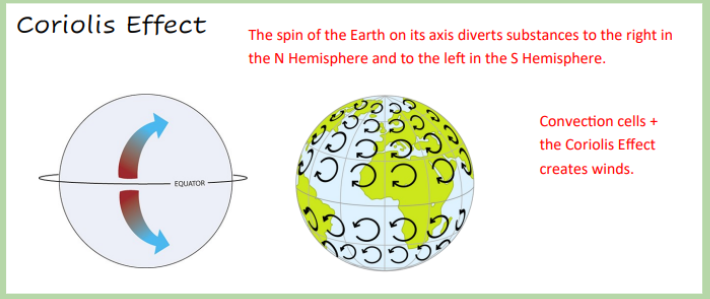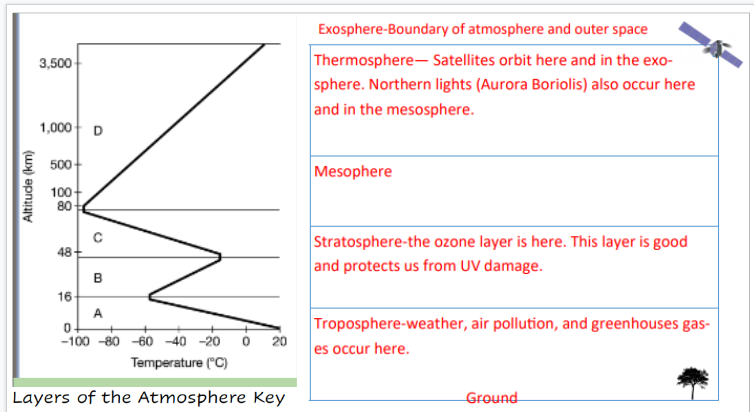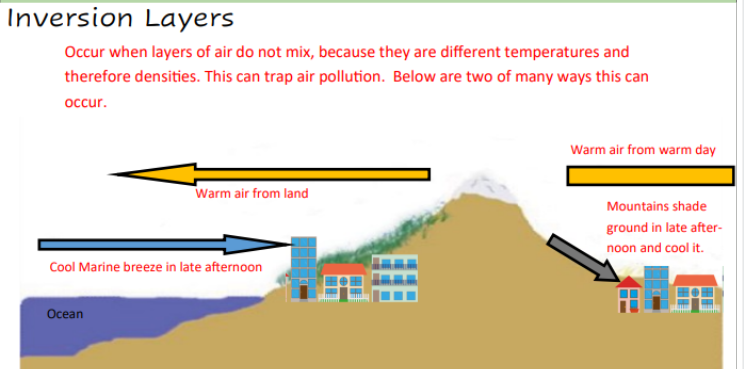Unit 4.4 and 4.7 Atmospheric Science Diagram Notes
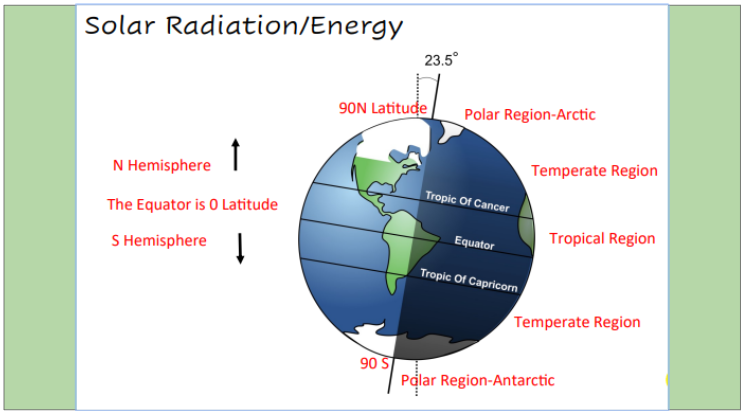
Seasons
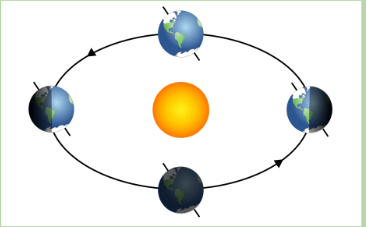
- Seasons of the Earth created from the tilt on its axis and the revolution around the sun every 365.342 days
- Winter Solstice
- Dec. 21
- Shortest daylight hours
- 24 hours night in Arctic
- 24 hours day in Antarctic
- Summer Solstice
- June 21
- Longest daylight hours
- 24 hours day in Arctic
- 24 hours night in Antarctic
- Autumnal Equinox
- Sept 21
- Vernal Equinox
- March 21
Convection

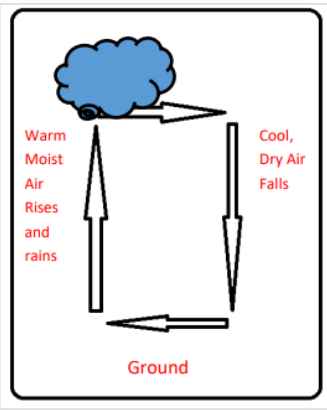
Warm moist air rises, cools in upper atmosphere, drops moisture and diverges. Cool, dry air falls on a different latitude.
Many deserts are found around 30° N and S latitudes from this process.
